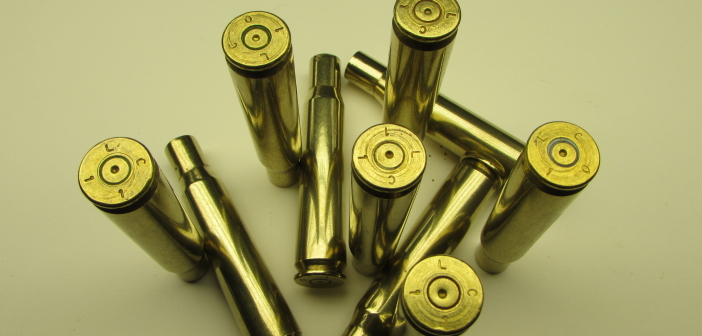Once-fired brass is a name for bullet casings that have been fired from a gun and collected by an ammunition reloader to be put back together and sold to the public. This practice is sometimes controversial because the resellers collecting once-fired brass don’t always follow the law when it comes to checking buyers’ firearm licenses. In one recent case, an ammunition seller in New York City raised eyebrows by collecting spent police bullet casings from a firing range and then selling the reassembled bullets without checking buyers’ licenses. Owning ammunition in New York City is illegal without a firearm license.
On the other hand, once-fired brass provides low-cost ammunition to people who don’t require new brass bullet casings. Many police departments send their fired brass to scrap yards to be melted down, but the U.S. military sells them to fired brass resellers. Neither the military nor police departments use brass casings once they’ve been fired, mainly because the quality of the bullets is reduced due to ricocheting off of hard surfaces and the impact of being fired. Once-fired brass is only a name, and the casings may actually have been fired more than once. However, because the military and police don’t use previously fired casings, buying once-fired brass from these sources is a pretty good way to be sure the casings have only been fired once.
Different Grades of Once-Fired Brass
According to Diamond K Brass, “Used brass bullet casings are usually sold in different grades, according to the quality they still have after being fired once or several times. In addition to collecting and reloading casings, once-fired brass resellers clean and polish the ones that can be considered higher quality than the rest. They often sell casings as they are, without reloading them, at wholesale prices. Ammunition sellers can get deep discounts on bullet casings by buying them wholesale from once-fired brass resellers, although most bullets sold this way are visibly of lower quality than new bullets.”
Each time a bullet is fired, the case expands, so previously fired brass needs to be resized before being reloaded and used. Otherwise, even though the expansion is small, the reloaded ammunition doesn’t fit in the chamber properly and can cause misfires. Usually, gun owners who buy once-fired brass wholesale perform their own resizing and polishing, but ammunition sellers do these jobs too before reselling the bullets for a profit. When resizing fired brass casings, it’s important to make sure they have a consistent feel to prevent problems when firing the bullets. In general, care should be taken when firing previously used bullets because of the wide range of defects found in used casings.
Handloading Vs. Reloading
Reloaded once-fired brass is similar to handloaded ammunition, but there are some small differences. Many people consider reloaded and handloaded bullets to be the same type of ammunition, but experts on the subject say that handloaded bullets are made from new casings while reloaded bullets are made from once-fired brass. The process of assembling the bullets is essentially the same, except that reloaded casings have to be sorted, resized and polished first.
All of this preparation doesn’t mean that reloaded bullets can’t be used in high-precision firearms, including rifles and pistols. The polishing process is important for these types of bullets because it cleans the cases inside and out, making them easier to sort as well as removing residue that can affect precision. Some cases are rejected, however, due to cracked necks, head separation and improper materials. Most metals other than brass can’t be reloaded, and aluminum and steel cases must be thrown away.
Reloading once-fired brass can be dangerous, especially when priming the cases. Because the primers are sensitive to pressure, reloaders need to wear safety goggles to protect against accidental detonation of the ammunition. Care also has to be taken when refilling large cases with powder to prevent overfilling, which can cause an explosion inside the chamber of the gun.




